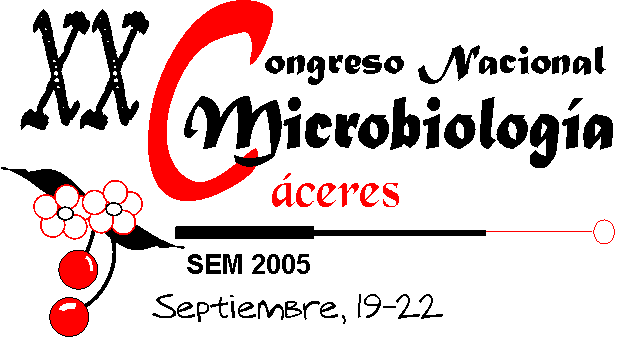

P - 64
Department of Plant Physiology, Faculty of Biology, Complutense University, José Antonio Novais Av., 28040 Madrid. E-mail: yblanco@bio.ucm.es
Bacteriocins are exocellular proteins, produced by bacteria and another microorganisms, to destroy other bacteria occupying their ecological niche. Generally, these bacteriocins exert their anti-microbial action by interfering with the cell wall or the membrane of target organism, either by inhibiting cell wall biosynthesis or causing pore formation, subsequently resulting in death. Many bacteria produce and secrete this kind of proteins.
Gluconacetobacter diazotrophicus, a N2-fixing, sugarcane endophyte, produces a lysozyme-like bacteriocin in liquid medium that inhibits growth of Xanthomonas albilineans (leaf scald pathogen). This apparent inhibition of bacterial growth has been revealed as lysis of bacterial cells.
The aim of the present study concerns to the purification and biochemical characterization of lysozyme produced by G. diazotrophicus to establish a possible mechanism of biological control of scald leaf.
G. diazotrophicus, strain 166 (CM-INICA), isolated from sugarcane, was maintained in a N-poor medium which contained 10% sucrose pH 5.5 at 30º C and X. albilineans, strain NCPPB 887, was cultured on Wilbrink medium at 37º C. Micrococcus luteus, strain CECT 241, was maintained in a mannitol salt agar medium at 30º C.
Lysozyme secretion to liquid medium and cellular lysozyme production by G. diazotrophicus was assayed against X. albilineans and against M. luteus during 12 days. Also, lysozyme purification was carried out by precipitating protein with 80% ammonium sulfate and filtration through a Sephadex G-100 column (74 cm x 3 cm) equilibrated with 10 mM phosphate buffer pH 6.14. The biologically active fraction against the pathogen, eluted from the Sephadex G-100 column, was prepared and resolved in PAGE/SDS and used for studying the substrate saturation kinetic and pH and temperature assays.
Lysozyme secreted by G. diazotrophicus was capable to inhibit the growth of X. albilineans and M. luteus, being its specifity activity against the pathogen higher than that found against M. luteus. Lysozyme was synthesized by G. diazotrophicus during the first and second days and later it was secreted to the culture medium, reaching the highest lysozyme activity value at the eleventh day of culture. This lysozyme is a glycoprotein with a molecular mass of about 10 KDa, and optimum pH and temperature of activity against X. albilineans of 8 and 22º C, respectively.